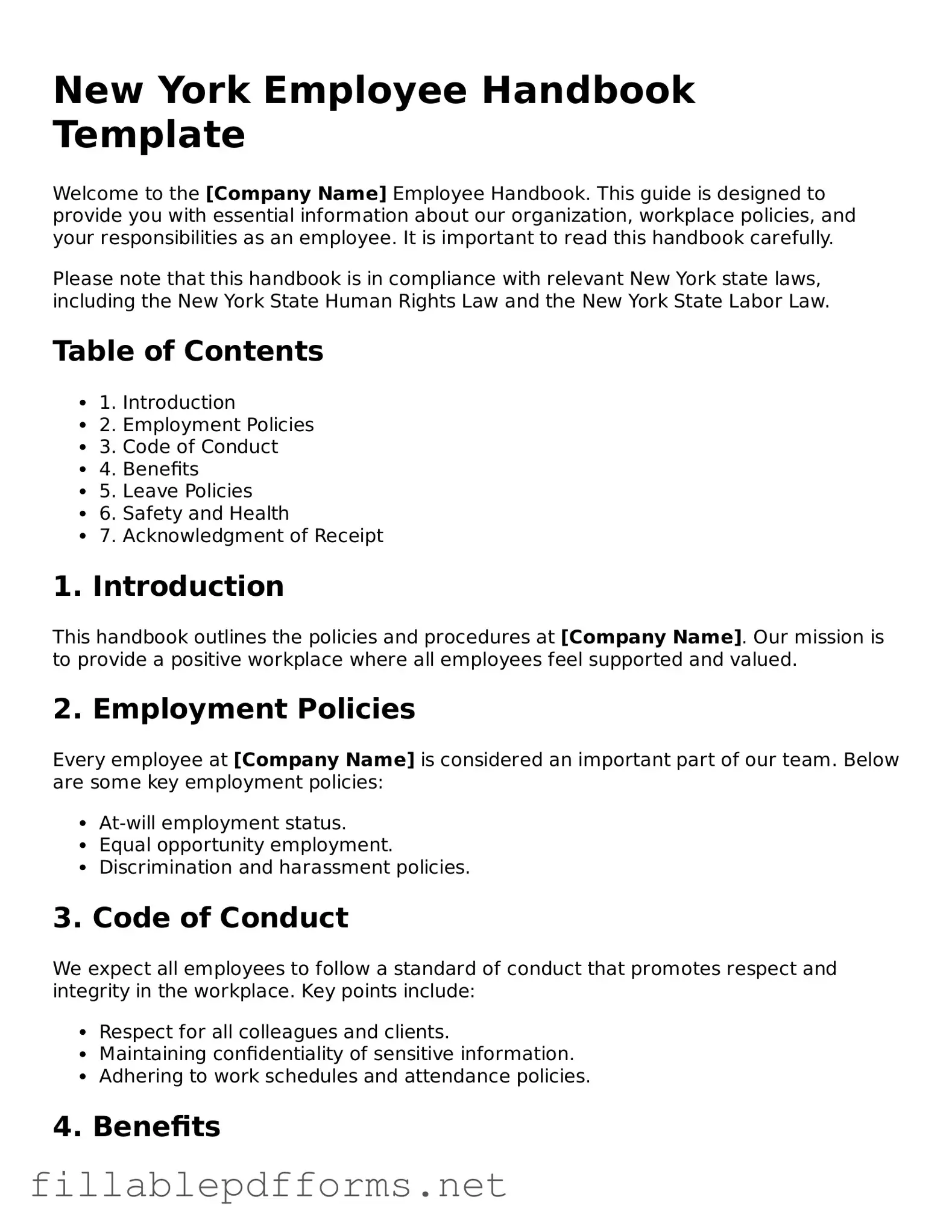Creating a comprehensive Employee Handbook is an essential step for any business operating in New York. This document serves as a vital resource for employees, outlining workplace policies, procedures, and expectations. It typically includes sections on company culture, employee rights, anti-discrimination policies, and guidelines for workplace behavior. Additionally, the handbook addresses important topics such as attendance, leave policies, and benefits, ensuring that employees are well-informed about their entitlements and responsibilities. By providing clarity on these matters, the Employee Handbook can help foster a positive work environment and mitigate potential misunderstandings. Furthermore, it serves as a legal safeguard for both employers and employees, detailing the rights and obligations that govern the employment relationship. Ultimately, a well-crafted Employee Handbook not only communicates essential information but also reinforces the organization's commitment to a fair and respectful workplace.
